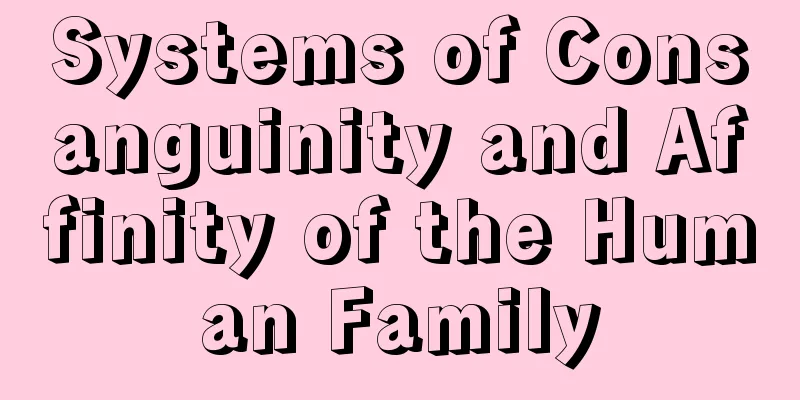Lullaby - Komoriuta (English spelling) lullaby English

|
Songs to keep infants and put them to sleep. Lullabies are important events for infants, as they introduce culturally prescribed patterns of music, literature, and physical movement through sounds and physical stimulation before they are even aware of their surroundings. First of all, the movements of the mother or other babysitter (hired person, etc.) as they hold the baby on their arms, lap, or back, or rock it in a cradle, determine to some extent the rhythm of each song. The existence of a three-beat rhythm in Western lullabies is not unrelated to the use of cradles. The lyrics often contain words such as "sleep" and "sleep", which are repeated at the beginning, end, and climax to give the song a sense of unity. The lyrics sung include trivial words to soothe the child, repeated syllables, sweet words or praise to lure the child to sleep, or, conversely, frightening words of punishment. In Japan, there are many examples of threats and resentment. In Oceania, historical lullabies that tell the story of a village's historical events or family lineage are widely distributed. In these cases, the lyrics are more intended as a record of history by adults in a non-literate society than as a way for children to listen, and the long repetition of a certain musical pattern or melody creates a place to lull children to sleep. In Europe and the United States, lullabies arranged from folk songs or newly composed have been preserved as songs or instrumental pieces. For example, the songs of Mozart (actually composed by B. Fries), Schubert, and Brahms are famous, and Chopin and Faure composed piano pieces. [Osamu Yamaguchi] Japanese LullabiesIn Japanese folk songs, it is classified as one of the work songs for babysitting. Babysitting work can be broadly divided into two categories: to put babies to sleep and to soothe them, and the songs themselves can be divided into two categories: "sleep songs" and "play songs." "Sleep songs" were originally sung to reassure people who may or may not understand what they are saying, and the original form was a slightly intoned version of words such as "Nennenyo." The "Edo Lullabies" (Nennen korori yo, okorori yo, where did the boy's charm go? Over that mountain I went to the village, I got nothing as a souvenir from the village, den-den drums and sho flutes...), which are still widely sung today, spread throughout Japan only during the Edo period. On the other hand, "play songs" are meant to keep children playing and having fun, so they often use a 7-5 rhythm repeated as many times as necessary, with the singer (the babysitter) adding things that she sees. Therefore, compared to "Sleeping Song," the song has a stronger rhythm and the lyrics have more movement. Apart from the songs sung by the baby's relatives, there are also songs sung by girls employed as babysitters, who were employed as laborers. These songs are all borrowed from farming songs or drinking party songs from the babysitter's hometown, with only the lyrics being written by the babysitter. There are two trends in the creation of the lyrics. One is the "Hakata Lullaby" from Fukuoka Prefecture (Our Lady of the Palace, the persimmons, look good but are bitter), in which the babysitter sang a scathing tale of her employer. The other is the "Itsuki Lullaby" from Kumamoto Prefecture (Odoma Kanjin Kanjin An Tachi Yoka Shi, Yoka Shi, Yoka Shi, Yoka Obi Yoka Kimon), in which the babysitter comforts herself by lamenting her circumstances. These babysitter songs and "sleep songs" are still popular among Japanese lullabies today. [Tsutomu Takeuchi] "Japanese Lullabies" by Goichi Matsunaga, new edition (1978, Kinokuniya Shoten) Source: Shogakukan Encyclopedia Nipponica About Encyclopedia Nipponica Information | Legend |
|
乳幼児の守(も)りをしたり眠らせるときの歌。乳幼児にとって子守歌は、物心つかないうちから音声と肉体的刺激によって、音楽・文芸・身体運動などの文化的に規定されたパターンを受け入れる重要な事象である。まず第一に、母親や他の子守役(雇われた人など)が、腕・膝(ひざ)・背に抱いたり(負ったり)、揺り籠(かご)に入れて揺らす動きそのものが、それぞれの歌のリズムのあり方をある程度決定する。西洋の子守歌に3拍子が存在するのは、揺り籠を利用することと無関係ではない。歌詞として含まれることが多いのは、「ねんね」「眠れ」の類のことばで、これらは冒頭・くぎり・終止の部分で反復されて、歌の全体に統一感を与えている。歌い込まれる歌詞内容としては、たわいなく子供をあやすことばや、音節の反復、眠りに誘うための甘言やほめことば、逆に恐ろしい懲らしめのことばである。脅しや恨みが述べられる例は日本に多い。またオセアニアでは、村の歴史的な事件や家系をたどる史譚(したん)子守歌が広く分布している。その場合、歌詞は子供に聞かせるというよりも、無文字社会の大人が歴史を記録する意味合いが強く、一定の音型ないし旋律型を長時間反復することによって子供を眠りに誘う場がつくりあげられている。 欧米では、民謡から編曲したり、新たに作曲した子守歌が歌曲あるいは器楽曲として残されている。たとえば、モーツァルト(実際にはB・フリース作曲)、シューベルト、ブラームスの歌曲が有名であるし、ショパン、フォーレがピアノ曲をつくっている。 [山口 修] 日本の子守歌日本民謡においては、乳飲み子を子守するおりの仕事唄(うた)の一つに分類される。子守仕事は、赤ん坊を寝かせるためと、あやすための二つに大別され、唄のほうも「眠らせ唄」と「遊ばせ唄」の二つに分けることができる。「眠らせ唄」は、ことばが通じるか通じないかの相手に安心感を与えるべく歌うため、「ねんねんよう」といったことばに多少の抑揚を加えたものが本来の形であり、今日も広く歌われている『江戸子守唄』(ねんねんころりよおころりよ、坊やのお守はどこへ行った、あの山越えて里へ行った、里の土産(みやげ)に何もろた、デンデン太鼓に笙(しょう)の笛……)が日本中に広まったのは江戸時代に入ってからのことである。一方「遊ばせ唄」は、子供を楽しく遊ばせるためのものだけに、七五調を繰り返して、それを必要なだけ続け、そこに歌い手である子守の目に映るものを並べてゆく形が多い。そのため、「眠らせ唄」に比べると曲は抑揚が大きく、歌詞に出てくるものにも動きがある。 これら赤ん坊の身内の人が歌うものと別に、子守奉公に雇われた少女が、労働としての子守で歌ってきたものがある。この種のものは、いずれも子守の出身地の農作業唄か酒盛唄を借用し、歌詞だけが子守女の創作である。歌詞の創作に2種の傾向があり、一つは福岡県の『博多(はかた)子守唄』(うちの御寮(ごりょん)さんながらがら柿(がき)よ、見かけよけれど渋ござる)に代表される、子守が居直って雇い主の悪口を歌うもの。もう一つは熊本県の『五木(いつき)の子守唄』(おどま勧進(かんじん)勧進あん人達(たち)よか衆(し)、よか衆よか帯よか着物(きもん))のように、子守女が境遇を嘆くことでわが身を慰めるものである。そしてこの子守奉公の唄と「眠らせ唄」が、日本の子守歌のなかで今日も人気がある。 [竹内 勉] 『松永伍一著『日本の子守唄』新装版(1978・紀伊國屋書店)』 出典 小学館 日本大百科全書(ニッポニカ)日本大百科全書(ニッポニカ)について 情報 | 凡例 |
<<: Surinam toad (babysitter frog)
Recommend
Total eclipse - total eclipse
A solar eclipse is a phenomenon in which the main ...
Drosophila melanogaster - Drosophila melanogaster
This insect belongs to the family Drosophilidae, ...
Oawagaeri (English spelling) timothy
A perennial grass of the grass family (APG classi...
Locust plague
The damage caused by locusts eating rice. Damage t...
Akame 48 Waterfalls
This waterfall is located in Nabari City in the m...
Promix
… Cellulose diacetate with an acetylation degree ...
Óbuda (English spelling)
The name means "Old Buda" in Hungarian. ...
Mochalov, PS (English spelling) MochalovPS
… Griboyedov's Sorrows of Wit (1824-28), Push...
Kabukicho
A downtown area in Shinjuku, Tokyo. Developed as p...
Residual gas analyzer
...In principle, it is possible to calculate the ...
Love - Aiyoku (English spelling) kāma
A Buddhist term. In Buddhism, love includes love, ...
Assistant curator - gakugeiinho
...A specialist staff member assigned to a museum...
Edo Handayu
The first generation. Edo Joruri Tayu. Founder of ...
Release of the Ocean - Oomi no Houka
Folk performing art. A type of Furyuu dance, the N...
Oral Musical Writings - Ongyokukudensho
A Gidayu-bushi manuscript. The title is "Oral...









